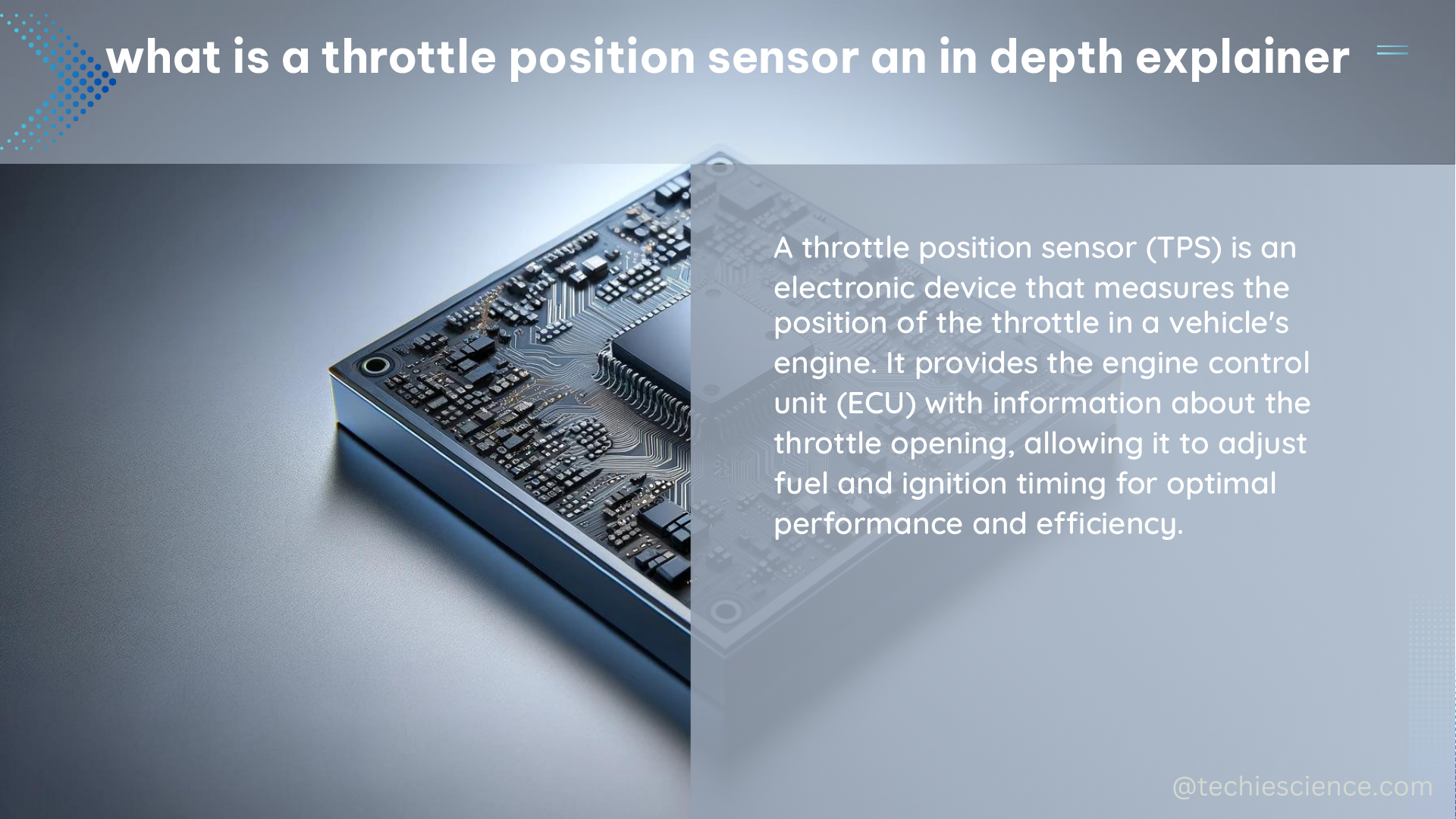A throttle position sensor (TPS) is a critical component in modern automotive engines, responsible for precisely measuring the position of the throttle valve within the throttle body. As a crucial part of the engine management system, the TPS provides real-time data on the throttle’s angle, which is then used by the engine control unit (ECU) to optimize the engine’s air-fuel mixture, ignition timing, and overall performance.
Understanding the Throttle Position Sensor
The TPS is typically a potentiometer-type device, which converts the angular position of the throttle into an electrical signal. This signal is then transmitted to the ECU, allowing it to adjust various engine parameters for optimal efficiency and power delivery.
The TPS is usually located on the throttle body, positioned close to the throttle plate and connected to the throttle shaft. As the driver presses the accelerator pedal, the throttle opens and closes, causing the TPS to generate a varying voltage signal that reflects the throttle’s position.
Technical Specifications of a Throttle Position Sensor

The technical specifications of a throttle position sensor can vary depending on the vehicle make, model, and year, but generally include the following key parameters:
- Resistance Range: The TPS typically has a resistance range between 1-3 kΩ, which changes as the throttle position varies.
- Voltage Output: The TPS produces an output voltage that typically ranges from 0.2-4.8V, depending on the throttle’s position.
- Accuracy: The TPS should provide accurate and reliable measurements, with an error margin of less than 5%.
- Response Time: The TPS should have a quick response time, typically less than 10 milliseconds, to ensure real-time data transmission to the ECU.
- Temperature Range: The TPS should be able to operate within the engine’s temperature range, typically from -40°C to 150°C (-40°F to 302°F).
- Durability: The TPS must be designed to withstand the harsh conditions of the engine compartment, including vibrations, temperature fluctuations, and exposure to engine oils and contaminants.
Diagnosing and Repairing a Faulty Throttle Position Sensor
If a throttle position sensor is suspected to be faulty, a DIY enthusiast can follow these steps to diagnose and potentially repair the issue:
- Locate the TPS: The TPS is typically found on the throttle body, near the throttle plate.
- Check for Loose Connections: Ensure that the TPS is securely connected to the throttle shaft and that the wiring harness is properly connected to the sensor.
- Test the TPS: Use a multimeter to check the resistance and voltage output of the TPS at different throttle positions. Compare the readings with the manufacturer’s specifications.
- Clean the TPS: If the TPS is dirty or contaminated, clean it gently with a soft cloth and electrical contact cleaner.
- Replace the TPS: If the TPS is faulty or damaged, replace it with a new one, ensuring that it is compatible with your vehicle’s make and model.
Importance of the Throttle Position Sensor
The throttle position sensor plays a crucial role in the engine management system, providing the ECU with real-time data on the throttle’s position. This information is used to optimize the engine’s air-fuel mixture, ignition timing, and other parameters, resulting in improved performance, fuel efficiency, and emissions control.
Without a properly functioning TPS, the engine management system would not be able to accurately determine the driver’s intended throttle input, leading to potential issues such as poor acceleration, reduced fuel economy, and even engine stalling or misfiring.
Conclusion
The throttle position sensor is a vital component in modern automotive engines, responsible for providing the engine control unit with precise information on the throttle’s position. By understanding the technical specifications and diagnostic procedures for the TPS, DIY enthusiasts can effectively maintain and troubleshoot this critical sensor, ensuring their vehicle’s optimal performance and efficiency.
References:
- Throttle Position Sensor (TPS) – How it Works
- Throttle Position Sensor (TPS) Diagnosis and Testing
- Throttle Position Sensor (TPS) Replacement Cost
- Throttle Position Sensor (TPS) Function and Troubleshooting

The lambdageeks.com Core SME Team is a group of experienced subject matter experts from diverse scientific and technical fields including Physics, Chemistry, Technology,Electronics & Electrical Engineering, Automotive, Mechanical Engineering. Our team collaborates to create high-quality, well-researched articles on a wide range of science and technology topics for the lambdageeks.com website.
All Our Senior SME are having more than 7 Years of experience in the respective fields . They are either Working Industry Professionals or assocaited With different Universities. Refer Our Authors Page to get to know About our Core SMEs.